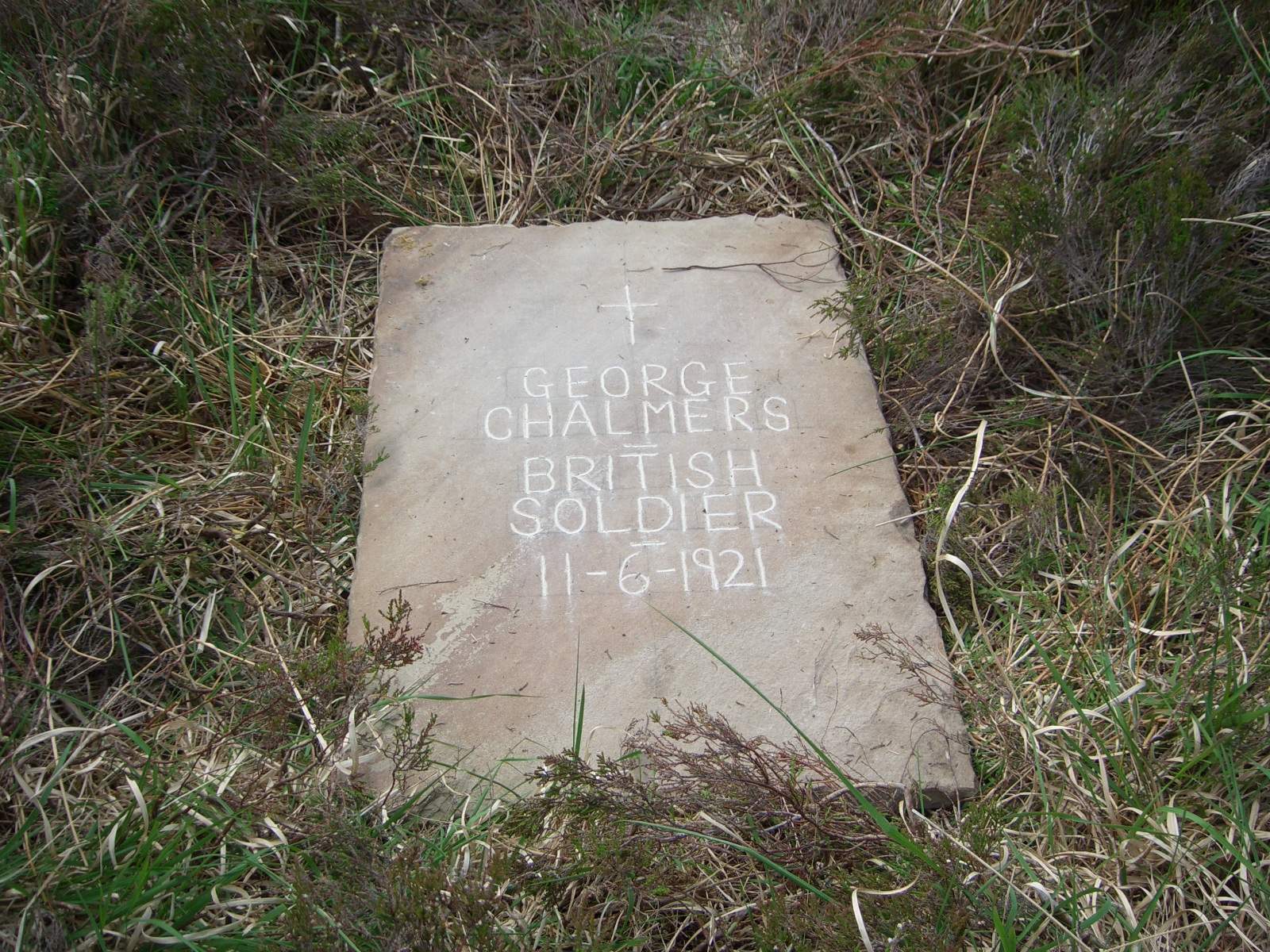British soldier’s body exhumed after 97 years
The remains of Private George Duff Chalmers have been removed to Grangegorman, writes Owen Ryan
THE body of British soldier Private George Duff Chalmers lay in a Miltown bog from the summer of 1921 until Tuesday, when it was exhumed.
Private Chalmers was just 18 years of age when he was killed in Drumbaun on June 10, 1921, during the War of Independence.
A statement from the Commonwealth War Graves Commission this week gave the background to his death and exhumation. “It is believed he was killed by representatives of the Irish Republican Army and was buried in a remote peat bog. Until August 2016, Private Chalmers was not listed in the Commonwealth War Graves Commission’s records, despite being eligible. A review of the case by the Ministry of Defence saw Private Chalmers officially recognised and CWGC records were amended.
“In 2017, the Commonwealth War Graves Commission was contacted by the family of Private Chalmers, who enquired about the possible relocation of his remains to an alternative location. CWGC identified that, as the current location was difficult to access and maintain, relocation of the remains would be possible.”
After being exhumed, the remains were reburied at Grangegorman Military Cemetery, at a ceremony attended by some relatives of the late soldier.
The UK Ministry of Defence plans to hold a ceremony at Grangegorman later this year, when a headstone will be installed.
Private Duff Chalmers had been a member of the Royal Scots and, following his exhumation, Clare historian Dr Pádraig Óg Ó Ruairc said that his former regiment had shown little interest in the deceased man.
“I first published the story about him being killed in my book, Blood on the Banner, about 10 years ago. At that time, I wrote to the Royal Scots Museum in Edinburgh. I didn’t have the soldier’s name; I asked them for information about the shooting. I got a response that told me they had no information, they weren’t interested and to stop annoying them. It’s very sad that his regiment took no interest at the time but I’m very happy that he has been exhumed, that he has got a proper burial and that his family are happy with that as well,” he commented.
Speaking about the historical background to his death, Dr Ó Ruairc said, “It’s important to note that the grave has always been respected by local people. After my research identified the name of the soldier who had been executed and buried in the bog, a stone grave slab was put up, covering the grave, to mark it. The people who put it up were republicans, and they all had a strong interest in history and wanted to see the site preserved and marked. But they were very conscious that they were not putting up a memorial or a monument to Private Chalmers. I think most people would take the view that what happened to Private Chalmers was a tragedy but it’s a real shame that, at the time, the British government didn’t give the Irish people independence and they forced young men like him to come over and lose their lives here.”
Dr Ó Ruairc wrote about the killing of the soldier in 2013 and said that local oral history had it that Chalmers was courting a local woman at the time, and had left an army convoy to see her.
He described the capture and interrogation of the young man. “A short time after leaving the lorry, Chalmers was captured by two members of the IRA. Chalmers was brought before a group of local IRA officers, including Seamus Hennessy and Stephen Gallagher. During his interrogation, Chalmers refused to give his name or any other information.
He was subsequently court-martialled by the IRA and sentenced to death. Private Chalmers was taken to the local national school, where there was an IRA arms dump, immediately afterwards. He was shot and buried in an unmarked
grave.”
An IRA report of the incident said Chalmers was executed on suspicion of having been a spy on an intelligence-gathering mission, while Dr Ó Ruairc claimed that Scottish soldiers were hated, following a number of attacks on civilians. “In April 1920, a mixed patrol of RIC and British soldiers from the Royal Highland Light Infantry had opened fire on a group of civilians in Miltown Malbay, killing three people. That July, mourners attending the funeral of IRA volunteer Michael Conway in Ennistymon were fired upon by members of the Royal Scots.
“In September 1920, Scottish soldiers had taken part in the reprisals following the Rineen ambush, which resulted in the deaths of seven people, including two elderly men and two children. If Private Chalmers had been a member of a different British army regiment captured in the same circumstances, it is unlikely that he would have been treated as harshly by the IRA.”
